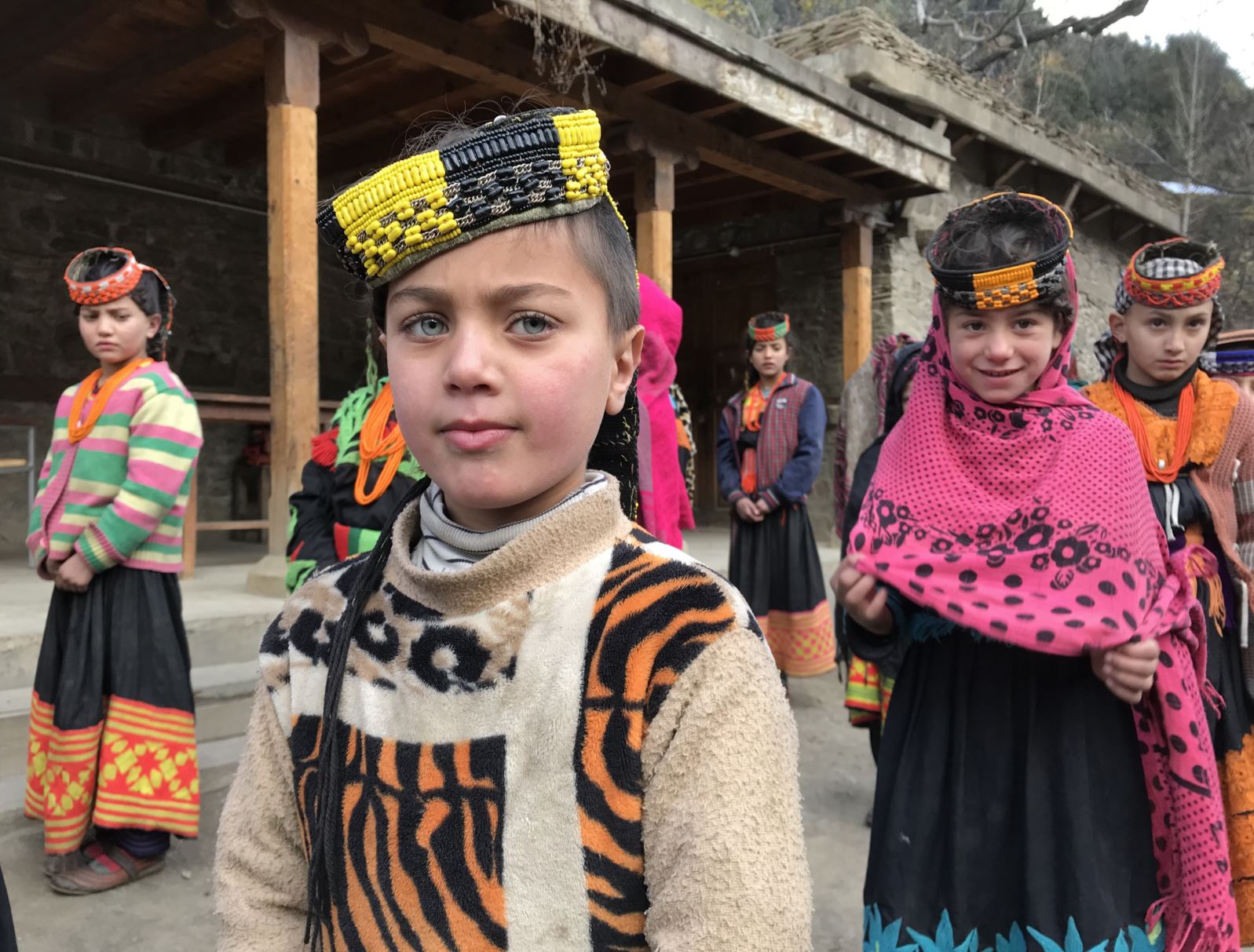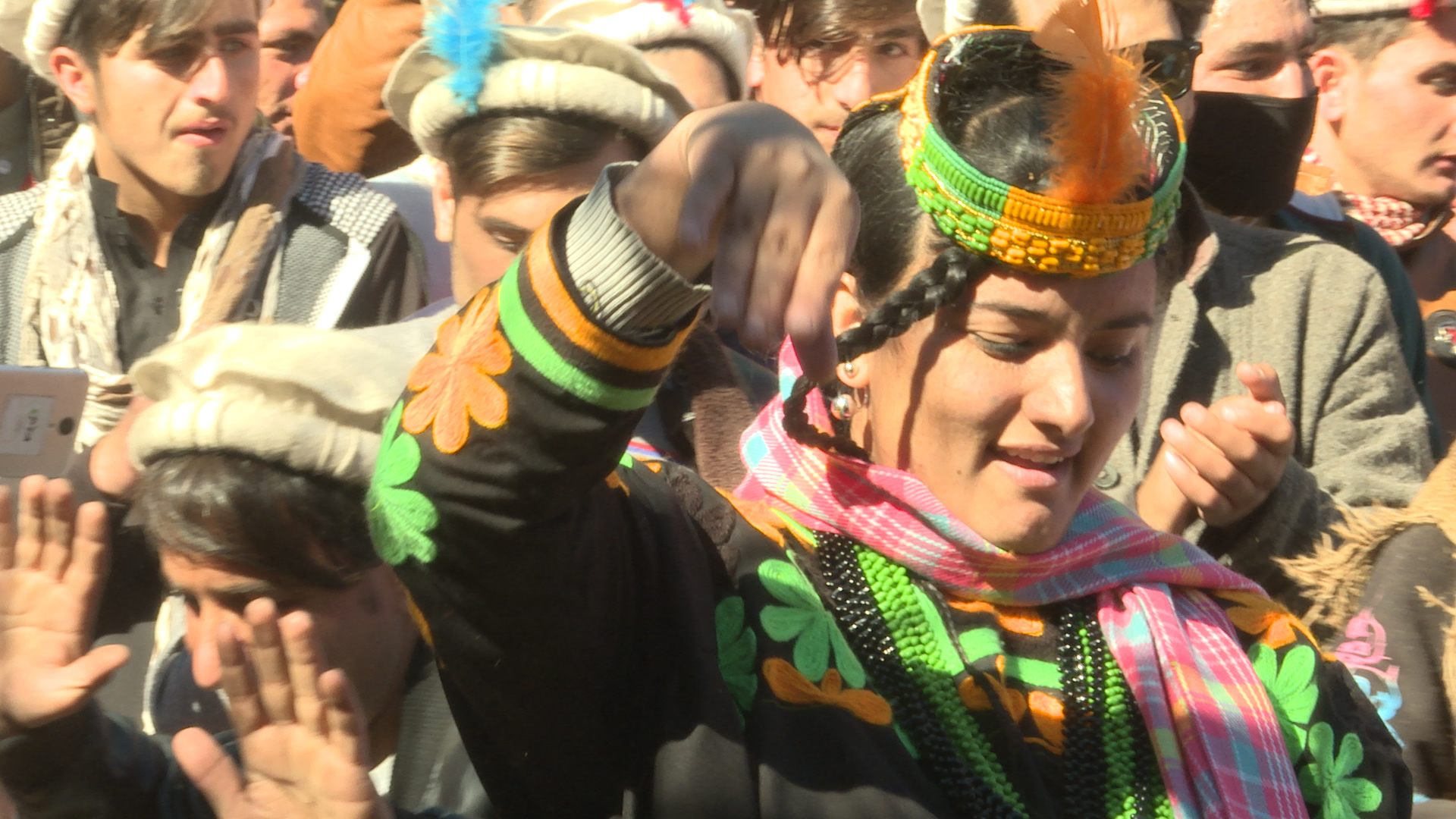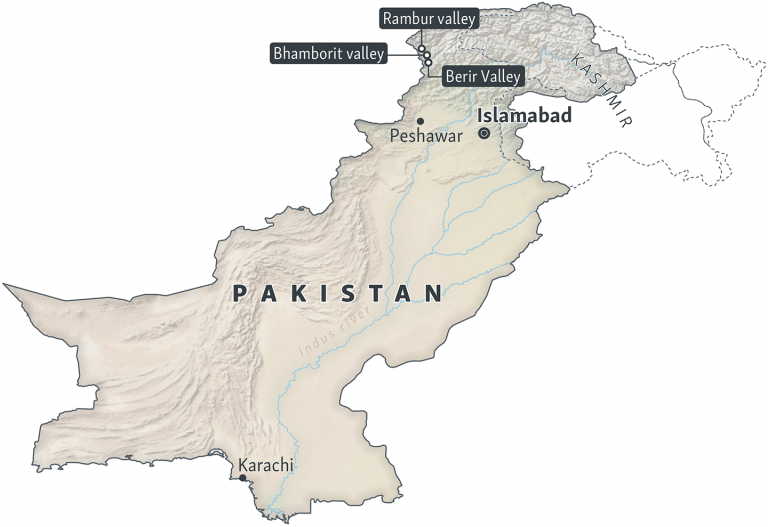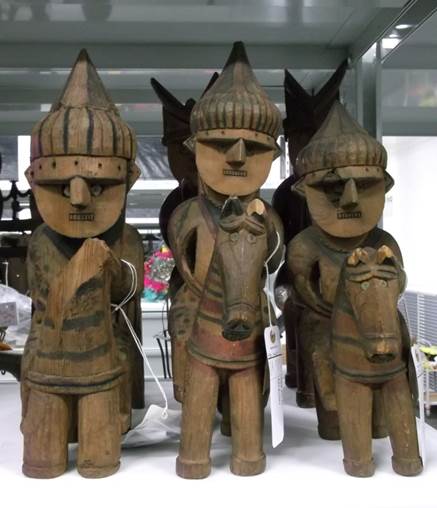The other important feature of Kalash life is their practice of leaving their dead on a wooden coffin expose to cold and hot weather. With the passage of time the wooden coffin is ruined and disintegrated and remains of the skeleton of the dead present a horrible sight. After one year the relative of the dead fix wooden effigies of the persons and depicting the picture of their deads. This ceremony is done in pomp and show followed by feast. The dead man is placed in a stretcher made of bamboos. The dead bodies particularly of the ladies are given beauty touches. The relatives throw coins across the dead body as alms which is collected by large number of youngsters mostly poor following the funeral procession.
In uncertain weather conditions the dead body is shifted to their praying halls called “Jastak Han” which is named after one of their deities. The dead body is kept there for public glance for a day or two. Sometimes the dead body is washed and cleaned and is covered in a new clothes. Women are, however, treated differently. They are kept in the same clothes, which the women wear during the time of death. For women and children there is no singing and dancing.


The Kalash believe that soul of the dead visits the cemetery for four days and it was in this context the kalash often light small candle near the coffin in a wooden box. After one year a wooden statue is erected and is placed near the coffin in a ceremony. The idea of greeting the wooden mummy is to project the bravery of the dead man and his other good qualities.
If a women died during the course of delivery or during menstruation period in the Bashali her dead body will not be taken to her house instead it would be directly shifted to the cemetery. The coffins of dead women are kept in a corner of cemetery. For the old women enjoying respect in the society, the relatives consider it a privilege to give her all possible honour. The dead is dressed nicely and beauty touch is given to make her more attractive and graceful. Sometime artificial ornaments are also placed in her coffin. In the past, shoes with which she dances in her life time were also kept in her coffin.
Anxious Times In Pakistan’s Pagan Valley
Nine-year-old Naveed Iqbal frequently accompanies his grandfather to mosque in this valley surrounded by the soaring peaks of the Hindu Kush mountains. But he doesn’t go inside — not yet, at least. “When I go inside to offer my prayer, he waits outside on the mosque stairs until I come out,” his grandfather, Bilal Shah, told RFE/RL in an interview in this hillside village in Bhamborit, one of three idyllic valleys in the Chitral district of Pakistan’s northwestern Khyber Pakhtunkhwa Province.Naveed is a member of the Kalash, a pagan community known for their fair skin that has long inhabited this area near the border with Afghanistan.
The Great Game & Alexander the Great: 19th century transformation in Kalasha material culture in northwest Pakistan
In Autumn 2012, I first encountered the vast Asian Ethnographic Collections held at the British Museum. I knew the collections were considerable, but nothing could prepare me for T1: a cavernous space with the windows blacked out, the walls clad in glazed tiles and my footsteps echoing as I walked through it. The floor was filled with bay upon bay of metal storage racks that were, in turn, being filled with tens of thousands of ethnographic objects from across Asia. One of my jobs was to work out a coherent system to organise all of this material. Thus far, the only thing I had organised was a small, albeit packed room of material associated with the Annals of Human Genetics Archive at UCL. Needless to say, I panicked. Then I got on with the job.


